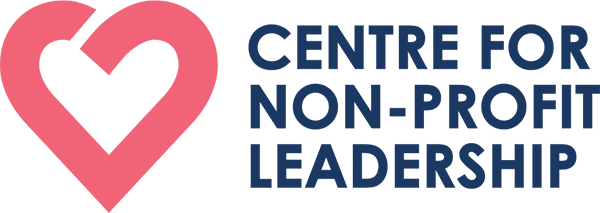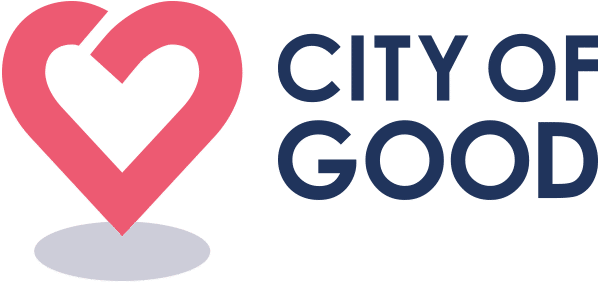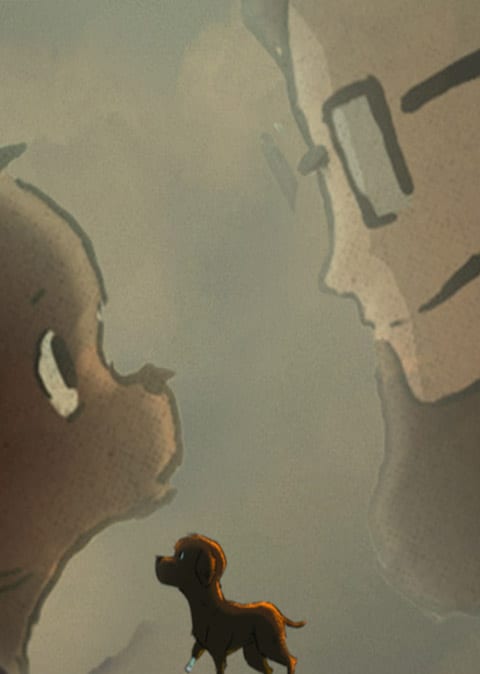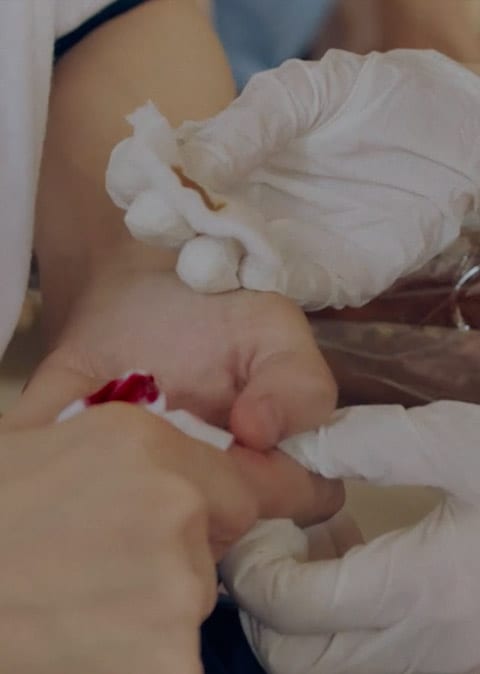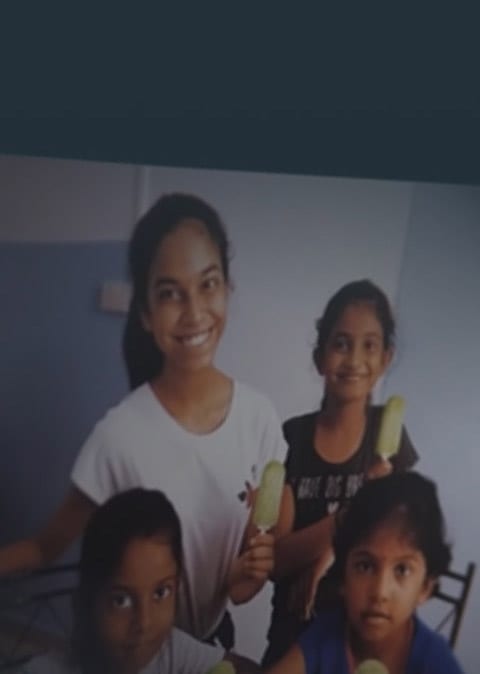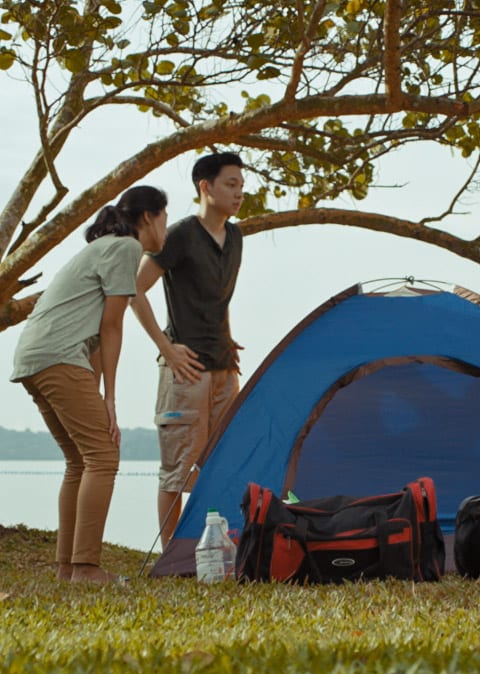Transcript
Grace Ann Chua [00:05]: What do chemistry catch ups, virtual water coolers, and green t-shirts have in common? In this episode we discuss useful tips and things to think about when onboarding new members to your community. Welcome to Crafting Communities, your podcast companion to shape a better community experience for the people you care about. I’m your host, Grace. And today, we’re continuing from our last episode about onboarding with Shaily and Li Woon.
Grace Ann Chua [00:34]: When someone joins a new community, they might be pretty overwhelmed and anxious. There’s a new culture, lots of information and people to meet. How do you make them comfortable and ease them in?
Shaily Gupta [00:43]: Yeah, let me share some of the things that I probably did as a leader when I was welcoming somebody in my team. What typically I do is I design a welcome message for a person so that when the person comes and switches on his/her laptop, the first email is from me welcoming the person marked to the entire team, so that he/she gets the connect with the rest of the team. We even used to do something very interesting, which is to build a WhatsApp group of the team. And even before the person could come on board, a day earlier, we would kind of add the person to the WhatsApp group, and introduce and welcome the person, and ask the person to send some of their personal pictures that they are comfortable sharing, so that the team knows how the person looks like. So on the day, when the person is in the office, they could walk up to the person, recognize the person, and say hello, because you now know how the person looks like. So those are some of the key things that we did.
Shaily Gupta [01:45]: Also, what I would do is if there are any weekly huddles, monthly meetings, those schedules, I would make sure that I’ve sent an e-invite for all those meetings so that I don’t forget. There have been embarrassing situations where all of us are sitting in a team huddle, and suddenly like, “Where’s that new joinee?” And the person is sitting in the bay alone thinking that I’m still not part of the in-circle. So, you have already done a lot of harm and then you are undoing a lot of mistakes that you’ve done. So, I would make sure that whatever all the team huddles and the monthly meetings that I have, I’ve already sent the invite to the person so that it’s sitting on the person’s calendar.
Shaily Gupta [02:24]: Third thing that I would typically do is that I would have frequent check-ins. I would kind of invite the person weekly for a catch up. The reason is, there is a difference between you as a leader saying that, “Feel free, I have an open door policy. Walk up to me if you need any help,” than saying that, “Let’s catch up every Friday for one hour.” And then when I could ask open-ended questions, “How’s your one week? What are the new learnings? What do you think that we could change? Because you’re still coming with a fresh mind and a fresh approach, you could come up with certain suggestions.” Because when the person is seeking my time, it could be little threatening and overwhelming for the person that “Am I doing some telltale?”, if I were to say, than to be in a situation where “I’ve been invited by the boss for a conversation, and I’m happy to answer her questions.” These are some of the things that I would do to make sure that I’m staying connected with the person and not lose him or her in the myriad of activities.
Grace Ann Chua [03:26]: I love what you said about the frequent check ins. I also do that with new joiners in my team. Some of the other questions that we asked are, “Do you have any questions for me? Or what are the challenges you are facing? How can I make your life easier?” It gives them an opportunity for them to raise up any concerns, any questions about the organization or practices or processes that they would be unfamiliar with. And exactly what you said, I think sometimes people feel a bit shy to go up to a leader or a senior manager to ask questions. But if you create that dedicated space and mentally prepare them, like, “Hey, this is your one-hour check in. You can share anything you want,” and to help them to feel comfortable in that one-on-one setting.
Shaily Gupta [04:03]: That’s right. Totally.
Li Woon Churdboonchart [04:05]: It’s really true on the one-on-one, too. One-on-one is anything that you mentioned is not only about work. Sometimes if you actually take the step, “How is your day? How was your weekend?” and then they will have something to share, and then from there, you can pick out certain things to get to know that person on a more personal level. So, you build that one-to-one relationship with them. I think that in itself will be very much treasured and appreciated by someone who’s junior or someone who just joined. They know that the organization, which you are representing, they know that organization truly really cares for that person. I think that makes a difference. That one-to-one check-in is really up to everyone to spill out. I always tell people, “Please ask me anything. If it’s outside work, it’s okay. If you have any curious question you want to ask about this…” Sometimes they will throw me off tangent with questions about me, myself, which is great because they want to know me, right? And then at the end of the day, through that conversation, you will get to know them and they get to know you, then we’ll work a lot easier.
Shaily Gupta [05:02]: Totally.
Grace Ann Chua [05:03]: What are some of the things that either of you do to help a new joiner feel connected to other people in the community? I get that the check-ins are more one-on-one, but what about building relationships across a community or across an organization?
Shaily Gupta [05:15]: As a part of the orientation typically– I’m sorry, my examples are largely from the corporate environment but I do think that they are relevant even in the community scenario– based on the role the person has in the organization, I would make sure that I have set up one-on-one meetings with all the stakeholders for this individual. Many times, for this individual to know and ask for those meetings can be very difficult. So, in the first one month of the person joining, I would make sure that all the relevant people that this person should personally be connected to or should know, I would block their calendars and set up those one-on-one meetings without me so that they can set up those chemistry catchups, and take away that awkwardness, that “How do I reach out to this person? I don’t even know him or her so well.” So, in this case, I can just walk up to the person and spend one hour having coffee.
Grace Ann Chua [06:10]: I love that term ‘chemistry catchups’.
Shaily Gupta [06:14]: Very impromptu, that was the thing that came to my mind.
Grace Ann Chua [06:18]: Exactly what you said, create an opportunity for people to create their unique chemistry and dynamic between them.
Li Woon Churdboonchart [06:24]: In that sense, we use very basic things to make them feel that sense of identity and sense of belonging. Through a volunteer experience, you will have times when you take a break, right? You need to take a break and then we have water. We always tell place the water. We say, “Oh, there’s water,” but everybody is very shy to go and take the water. We all also task our volunteers to go and say “hi, hey, would you like a water or something?” Sometimes on the ground, if we see little children, we’ll ask the little children to go and take the water, to ask every single volunteer to have it. So, then you start to feel that it’s actually a more personal hands-on experience, and you pull everybody together through just simple acts.
Li Woon Churdboonchart [07:03]: Prior to COVID, we have cakes as well. So we always use food, drinks to bind people together. And then through quick meals together or just simple food snacks together, they are really very good for bonding activities. So food binds people in, so we always think about that. T-shirts as well. If you see T-shirts – corporates, will always have the T-shirts for events. Even in volunteering it was really fun because once you have T-shirts, people feel that, “Oh, I’m part of this movement. I feel part of this entire meaningful purpose that we are [have] going up.” We have our T-shirts in green color, and it’s really cute because the seniors will always recognise us as the green people: “The green people. The people are coming.” Then it’s really cute because they don’t remember ‘volunteers’, which is a mouthful for the seniors. But they know these green people, right? That identity. And then the volunteers will go, “Oh, yeah, yes, yes, we are the green people.” So they call themselves green people. And I think that is a fun thing. And then you feel as part of the community. And very quickly, somebody acknowledges. When you go out in public, sometimes we will see my volunteers also wearing that green T-shirt, then it’s like “oh hello!” even in public.
Shaily Gupta [08:15]: Yeah, it’s an identity you’ve created.
Li Woon Churdboonchart [08:18]: So, it’s a lot of fun. It’s just a simple act. And then we have a lot of volunteers who post in them as well. When we first started off, we actually put it to regular volunteers. And they’re like, “Oh, finally, we’ve got this t shirt, and I’m part of this community. It is really cool.” And then we’ve got now a lot of people, who are like, “everyone is wearing green. I’m not wearing green. Can I have a T-shirt, please?”
Grace Ann Chua [08:42]: Coming back to the whole idea of onboarding, I get that there are some standard procedures and techniques that you may implement, but I’m sure that different volunteers or different people have different personalities or different characters. How do you tailor or personalize an onboarding experience while bearing in mind that different people are different? Is there a different way you would onboard an extrovert versus introvert?
Shaily Gupta [09:04]: How I look at this is that onboarding, or if you were to say, day one in the office, or the first few weeks in the new community, is a special moment, a moment that matters in my life. Then how do you make that moment that matters memorable for me? And that is what is important in this scheme of things. I don’t know if there are different ways to cater to different personalities. Because especially if you’re a large organization and if you have 30-40 people joining every month, that customization can get very overwhelming for you to administer. But you design your program in a way that it is fairly open-ended. So, let’s take an example. Suppose if I’m saying that I write a welcome message to all the new joiners in my team, the concept of welcome message is common. But how do I structure that welcome message? What kind of personality of the person I want to bring up in that welcome message is totally dependent on what kind of person they are. One could be a very deep thinker, a subject matter expert on something, so my entire welcome message is to amplify that part of the personality of the person, somebody could be a sports enthusiast. So my welcome message is to amplify that personality of the person.
Shaily Gupta [10:28]: Similarly, your one-on-one catchups, the chemistry catchups that we spoke about is common thing, that you put that on a calendar. Now considering somebody who’s an extrovert, I know that that kind of a person would reach up to his stakeholder and say that, “can we step out for a coffee instead of catching up in your office?” Right? I don’t have to interfere there and orchestrate. The person themselves will take care of that situation. Whereas for introverts, the secretary may just set up a one-on-one meeting, go sit in the office, you ask me questions, I’ll answer that. Let it be, because that’s what I’m comfortable with. So, I guess there is a structure but there is a customization that happens based on the personality is what I’ve observed.
Li Woon Churdboonchart [11:17]: In the volunteering scene, it’s probably a little bit easier, because I get to see all of them. So, one of the things that we do have is we have facilitators, we have the more senior ones. The more seniors will go and share with people. So, it’s not that daunting message coming from me to say that you need to do A to Z. But then the more senior ones, we will always say that “you’re more senior, so, can you facilitate the group?” We have the group leaders or the facilitators who will bring that entire thing, so they can have a point person to ask any questions they wish to ask, and without feeling that they’re pressurised because it’s coming from me. So, that’s one of the things. We call them the facilitators of the group. But at the same time because if I walk around and I can see, some of them will stand quiet, they’re a little bit quieter, they’re a little bit more introverted, and they seem lost. So, I will walk up, “Are you okay?”
Li Woon Churdboonchart [12:11]: So, it’s easier from volunteering perspective, because I see them on the ground. When I see and spot anyone who’s a little bit shyer, don’t know what to do, and they don’t know what they can do, then I will step in and then we’ll just support. The facilitators are also taught the same. You want to make the person who’s just joined the organization feel welcomed. So, you always have to step in to help people. So, that’s one of the things, because volunteering is easier in that sense because I have a large crowd of people, we will be able to spot them. So then after which, again highlighting it to the facilitators, “Can you please be a little bit more – do the buddy system?” When you do the buddy system, it’s easier. So, in a corporate setting, in my previous life, we always have a buddy-buddy system. Once you bring that individual into the organization, they know that they have one person to go to. You’re engaging the whole community to play their part, too. And then at the same time, if you introduce or welcome the group slowly, they will find their own cliques. They don’t necessarily need to go back.
Li Woon Churdboonchart [13:18]: Within the younger group of youth volunteers we have buddy system too. But sometimes, we will say on the spot that they may be going through different periods of their life, we can attach them with a mentor, which is someone older to get them to work. Again, volunteering is very different from our perspective because you need to help the people get through some of the items or the things in their life, so that they can actually be a much happier person when they come to volunteer and they will be serving our community in that happy state. So, we always have to make sure that the wellbeing of the volunteers are in a good shape.
Shaily Gupta [13:56]: Totally.
Grace Ann Chua [13:57]: When you’re sharing about the buddy system, I was reminded of one of my organization’s Friendzone, we have this thing called Friend-Friend. And it’s a pairing matching thing where every week everyone gets paired with another colleague from the organization and you’re just meant to schedule a 20-minute chat. Oftentimes, these 20-minute chats becomes like one to three-hour catchups. So, the goal is just to have some time for you to hangout or catchup with someone within the organization for a non-work conversation. And I think that really helps to build a relationship such that people are more comfortable with one another. They can naturally reach out to each other on their own, rather than having to go through like a manager to get something. They have that personal channel to one another.
Grace Ann Chua [14:40]: How have you seen COVID change onboarding?
Shaily Gupta [14:42]: I have seen a big difference during COVID because we have two limitations. There has been a phase when you could not meet physically at all because all of us were under lockdown. And there is a phase where there is a limited number of people can come together. So, there is no large scale induction plan where 30-40 people sit together and a facilitator comes and shares the vision-mission, the process, what is the purpose. Those structured onboarding and orientation programs became in a physical environment with good food and all that, because we do miss all that, kind of was not possible. So, a couple of things that I noticed many companies did [that] was very interesting for me. One was that there was an onboarding kit, welcome kit, which came home, which was just a welcome message. There was a whole kit, which had the company mug, the logo for your coffee because you’re going to be a lot on Zoom calls together and you could be having your coffee together just to bring that sense of identity, a T-shirt or socks or different things, cap, different things came in as a part of your kit.
Shaily Gupta [15:53]: Second, I think apart from one-on-one Zoom meetings, in the weekly huddles, I did see the leaders taking an opportunity to spend the first 15 minutes to introduce the person and giving a chance to the person to introduce themselves to the rest of the team, which in my mind was very interesting. Another very interesting thing that I saw was in this organization, again, to cater to different personalities, they had a repository of 25-30 questions, very interesting questions, which is describe yourself in one sentence or what has been your best holiday– some very interesting open ended questions. And these new joiners took a lot of pains in describing, putting their pictures and then marking that email to the rest of the team. I saw the virtual collaboration, something which was called ‘off-site’ was now called ‘home sites’.
Grace Ann Chua [16:50]: Oh, wow.
Shaily Gupta [16:51]: So, these ‘home sites’ were that they had budgets to kind of order in their meal. And everybody ordered their meal and they were all together on the screen, and it was a casual conversation– and what we call virtual water cooler conversations. Typically, you would all meet in a pantry and there is no agenda to the conversation. You’re just yapping to build your relationship. So, these ‘home sites’ were like just ordering your own food and company would take care of it. And then you’re just having casual chats or what I call virtual water cooler conversations.
Grace Ann Chua [17:24]: Oh I want to skip back to the 30 questions. So just clarifying, they don’t have to answer all 30 questions?
Shaily Gupta [17:29]: No, no, no. They just pick up the top three or the top five that they want to answer. The idea of doing these 30 questions is so that you’re not wasting your time, or if you’re not creative enough to think of how to present yourself.
Grace Ann Chua [17:45]: Yeah, I think it’s even good that by offering a list of 30 possible questions that you can answer, then it gives the new joiner the choice of which question they want to answer to showcase their personality. At least there’s a variety of options. It’s not that standard — What’s that question I hate? Oh, it’s “introduce one random fact about yourself.” People ask me that when I’m at orientation camps, I’m just like, “I don’t know what a random fact to say.” What is one interesting thing about me? Everything about me is interesting. A subjective experience.
Shaily Gupta [18:16]: Exactly.
Li Woon Churdboonchart [18:19]: That’s interesting. So, onboarding for us, same thing, what Shaily was sharing just then was we used to have me being the voice and then presenting it about 30-50 volunteers at one shot, right? So we started to just have a small conversation and the volunteers got bigger. So, I had to have on my speaker to project my voice to the whole group to give them the background of the purpose itself. Then we actually have to bind everybody with common purpose. So, that’s one of the things that we actually have to do. Every single orientation that we do, when we bring in new volunteers, we will have to share what we’re doing, why we’re doing it, and why we are in the community. So, we need to actually align all of them with the same kind of purpose, so that they will know that whatever they do when they get out to the community is going to be meaningful, purposeful, and they will be benefiting the community. So, that’s something that we found that is really interesting that we need to do in terms of the large kind of briefing.
Li Woon Churdboonchart [19:19]: But with a change of COVID, we have to translate that into either a slide or video introduction. We can’t miss it, but sometimes, the translation is still lost in the meaning. So that was interesting. It gave birth to roles of facilitators whereby we will identify all our regular volunteers who are in the community and they’re happy to step up to help the other volunteers at the same time. So now, instead of me doing one single briefing, this COVID situation has given opportunities to our regular volunteers to step up into little team leads, whereby they actually can tell what’s the purpose of this in relation to them. Because that purpose, they found a way to tell what it was so important to them, right? So, that gave us an opportunity to even bind closer because I can have my cluster or my leads to build and they will know the different characters of the volunteers. And when they have any questions, we can ask. That builds a little bit closer bond rather than me being here and I’ll tell you what to do, and then you go up.
Grace Ann Chua [20:21]: Yeah, I love that personalization. I mean, it’s not just your founder’s story, but it’s also become everyone’s story. And for the most senior volunteers who now take on the onboarding role, it’s also a way of leadership development for them to step up and to share their experiences and welcome the new volunteers.
Shaily Gupta [20:37]: In fact I wanted to add something very interesting that I saw during COVID. The quick feedback process, because when you’re in a physical environment, immediately after your meeting, or your presentation, your work, from the expression in the room of the colleagues and people whom you’re presenting, you know whether you’ve done well, or you’ve not done well. Now online, that’s very difficult to gauge, whether my work is being appreciated, whether I’m culturally fitting in or not, or whether I was very awkward. I saw this one company where after every presentation, or after every meeting, the manager would ask the new joiner to stay in for five minutes, a quick feedback session. And I know feedback has a negative connotation, but not in this case, because they take that as a very positive statement, because the manager immediately said, “Hey, I just loved it. You’re so new, and still you really cracked it. You did so well today. These are three things are very good. “Just quickly, two things. Just be watchful of these two, because culturally, this is how this organization is. I just wanted to orient you.” So, after every meeting, for the first couple of months, I saw some of the managers, immediately after the meeting will say, “Let’s do a take five. Three things which went well, two things we need to work on.” So, I know it’s very similar to frequent check-ins. But it was something even more rapid, because in a physical environment, you can feel it from the room, whether you’ve done well or you’ve not done well, whether my deliverables are acceptable or not acceptable. It’s become harder now virtually. So, how do you do that?
Li Woon Churdboonchart [22:16]: Same. Feedback, right? So, I will go and debrief. All the volunteers will come back at a specific time and blah, blah, blah, blah, blah, and then tell them what has happened, what did you do? Anybody would like to share? [murmuring] Nobody wants to talk to you. But when you actually have facilitators in smaller groups, they were like, “Oh, I want to tell you this, I want to tell you that.” It was really good because we start to get a lot of feedback and it’s coming from the ground, and then from the ground translated to us. It’s also good things, right? Because I can now develop the facilitators on how to take the questions. At the same time, we get more people to talk and speak up because it’s not so daunting to speak in front of 40 people, 50 people.
Grace Ann Chua [23:00]: Richer feedback as well. What is one piece of practical advice that you would like to give our listeners today who are looking at onboarding new members?
Li Woon Churdboonchart [23:09]: Mine would be we have the tagline to say, “Let me help you help others.” So, I want every single facilitator to build that mindset of let me help you so that you can help other people. So, once you have that mindset, they will always remember that that’s their role. And then with any new joiners, newcomers, they will have the same role. I think that’s a quite powerful one-liner when I give it to the facilitators. They have been really supportive and they’ve been doing exactly that role.
Shaily Gupta [23:38]: I think my advice would be just be available and do not underestimate the power of onboarding. These first 30, 60, 90 days are so important for a new joiner to become your long-term ambassador. So, do not underestimate the power of onboarding. Just be available.
Grace Ann Chua [23:58]: Thank you so much, Shaily and Li Woon, for sharing all of your insights and practical advice with our listeners today.
Shaily Gupta [24:04]: Thank you.
Li Woon Churdboonchart [24:05]: Thank you.
Grace Ann Chua [24:07]: Catch us for our next episode of Crafting Communities, where we speak to Sparsh and he heads up the BHP Singapore Community, a corporate volunteer group. He’ll share with us about how he personalises onboarding for his volunteers. Wanna hear more? This episode is available right now on Spotify and Apple Podcast!
